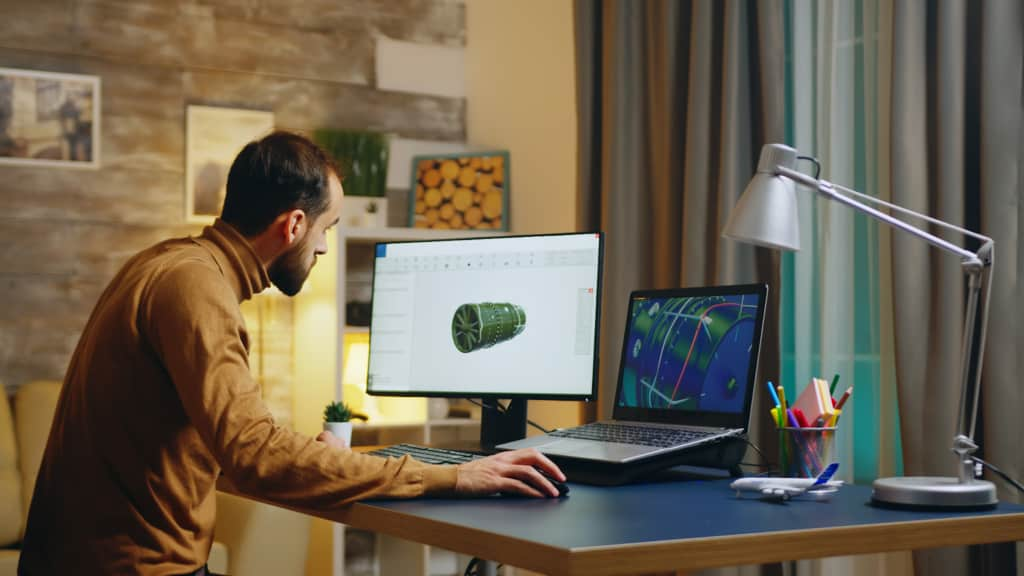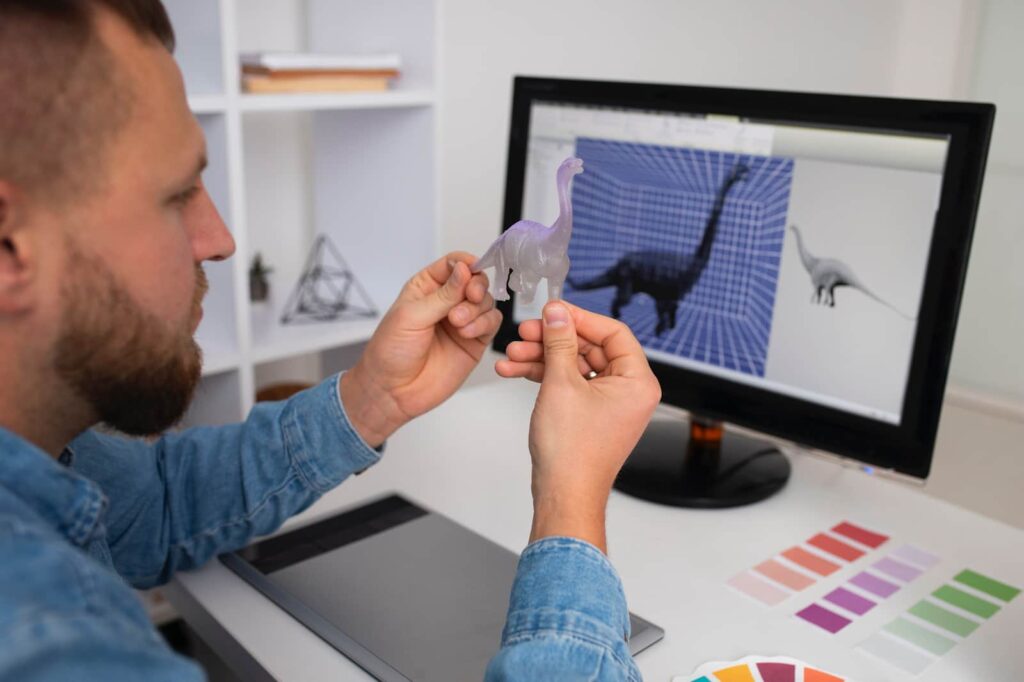In the world of design and technology, converting images to 3D models has become an increasingly popular and valuable skill. Whether you’re a graphic designer looking to add depth to your creations or a hobbyist interested in exploring the possibilities of 3D printing, understanding how to convert images into 3D models opens up a whole new world of creative possibilities.
This guide will provide you with everything you need to know about converting images to 3D models, from the basic principles to advanced techniques. By the end of this article, you’ll have a solid grasp of the process and be ready to start creating your own stunning 3D models.
Understanding the Basics of 3D Modeling
When it comes to converting images to 3D models, having a solid foundation in 3D modeling is essential. Before diving into the conversion process, it’s important to understand the basic principles of 3D modeling and how it differs from traditional 2D design.
What is 3D Modeling?
3D modeling is the process of creating three-dimensional representations of objects using specialized software. Unlike 2D design, which is limited to height and width, 3D modeling adds depth to the equation, allowing for more realistic and dynamic creations.
Common 3D Modeling Techniques
There are several different techniques that can be used to create 3D models, each with its own strengths and weaknesses. Some of the most common techniques include:
- Polygonal Modeling: This technique involves creating 3D models by manipulating individual polygons;
- NURBS Modeling: NURBS (Non-Uniform Rational B-Splines) modeling uses mathematical curves to create smooth, organic shapes;
- Sculpting: Sculpting allows artists to mold 3D models as if they were working with clay, making it ideal for creating organic shapes.
Pros and Cons of Common 3D Modeling Techniques
| Technique | Pros | Cons |
|---|---|---|
| Polygonal Modeling | – Easy to learn | – Can be time-consuming modeling |
| – Suitable for hard-surface | – Limited control over detailed geometry organic shapes | |
| NURBS Modeling | – Creates smooth surfaces | – Less precision compared to other techniques shapes |
| – Ideal for creating complex | ||
| Sculpting | – Intuitive and artistic | |
| – Great for creating organic |
Converting 2D Images to 3D Models Using Software
Once you have a solid understanding of 3D modeling principles, you can begin the process of converting 2D images to 3D models using specialized software. There are several tools available that make this process relatively straightforward, even for beginners.
Choosing the Right Software
When it comes to converting images to 3D models, choosing the right software is crucial. Some popular options include:
- Blender: A versatile and powerful open-source 3D modeling tool that is widely used in the industry;
- ZBrush: Known for its advanced sculpting capabilities, ZBrush is a favorite among digital artists;
- AutoCAD: Ideal for technical drawings and architectural designs, AutoCAD is a go-to choice for many professionals.
Steps to Convert Images to 3D Models
Converting images to 3D models typically involves the following steps:
- Import the Image: Start by importing the 2D image you want to convert into the software;
- Create a Basic Shape: Use the image as a reference to create a basic 3D shape that matches its outlines;
- Extrude and Refine: Extrude the shape to give it depth, then refine the details to match the original image;
- Add Texture and Color: Apply textures and colors to enhance the realism of the model;
- Finalize the Model: Make any final adjustments and tweaks to ensure the model meets your expectations.
Recommended Software for Converting Images to 3D Models
| Software | Best For | Price |
|---|---|---|
| Blender | Versatile and free | Free |
| ZBrush | Advanced sculpting capabilities | $895 (perpetual) |
| AutoCAD | Technical drawings and designs | $220/month |
Advanced Techniques for Image to 3D Model Conversion
While the basic process of converting images to 3D models is relatively straightforward, there are several advanced techniques that can take your creations to the next level. These techniques require a deeper understanding of 3D modeling principles and may take some practice to master.
Photogrammetry
Photogrammetry is a technique that uses photographs to create 3D models of real-world objects or scenes. By taking multiple photos of an object from different angles, specialized software can analyze the images and generate a detailed 3D model.
Retopology
Retopology is the process of optimizing 3D models by creating clean, efficient topology. This technique is especially useful when converting high-polygon models created through sculpting into more manageable, low-polygon models suitable for animation or real-time applications.
Advanced Techniques for Image to 3D Model Conversion
- UV Mapping: UV mapping is the process of unwrapping a 3D model to apply textures accurately;
- Normal Mapping: Normal mapping is a technique used to add surface detail to 3D models without increasing polygon count;
- Rigging and Animation: Once you have converted an image to a 3D model, rigging and animating the model can bring it to life in various ways.

Practical Applications of Image to 3D Model Conversion
The ability to convert images to 3D models has a wide range of practical applications across various industries, from product design to virtual reality development. Understanding how to leverage this skill can open up new opportunities for creative expression and professional growth.
Product Design and Prototyping
Product designers often use 3D modeling software to create prototypes of their designs before moving into production. By converting sketches or 2D images into 3D models, designers can visualize their concepts more effectively and identify any potential issues early in the design process.
Architectural Visualization
Architects and interior designers frequently use 3D models to present their designs to clients in a more realistic and immersive way. By converting floor plans and elevation drawings into 3D models, designers can create virtual walkthroughs that give clients a better sense of the space and layout.
Industries That Benefit from Image to 3D Model Conversion
| Industry | Applications |
|---|---|
| Product Design | Prototyping, visualization |
| Architecture | Visualization, client presentations |
| Gaming | Asset creation, environment design |
| Film and Animation | Character modeling, set design |
| Virtual Reality | Environment creation, interactive experiences |
Challenges and Solutions in Image to 3D Model Conversion
While converting images to 3D models offers numerous benefits, there are also challenges that creators may encounter along the way. Understanding these challenges and knowing how to overcome them is key to successfully navigating the conversion process.
Dealing with Complex Shapes
Converting images with complex shapes or intricate details can be challenging, especially for beginners. One solution is to break down the image into simpler components and create separate 3D models for each part before assembling them into a cohesive whole.
Managing File Size and Resolution
High-resolution images can result in large file sizes when converted to 3D models, which can impact performance and storage requirements. To address this issue, consider optimizing the image resolution before conversion or using compression techniques to reduce file size without sacrificing quality.
Tips for Overcoming Challenges in Image to 3D Model Conversion
- Practice Patience: Converting images to 3D models takes time and practice, so don’t get discouraged if your first attempts don’t turn out as expected;
- Seek Feedback: Share your work with fellow 3D artists or online communities to receive constructive feedback and advice on how to improve;
- Experiment with Different Techniques: Don’t be afraid to try new techniques and approaches to find what works best for your unique style and preferences.

Conclusion
In conclusion, the future of image-to-3D model conversion is poised for exciting developments driven by advancements in artificial intelligence, real-time collaboration tools, and emerging technologies. By embracing AI-assisted modeling and leveraging real-time collaboration capabilities, creators can unlock new possibilities for creativity, efficiency, and innovation in the 3D modeling process.
As the field continues to evolve, staying informed about the latest trends and technologies in image-to-3D model conversion will be essential for professionals and enthusiasts looking to expand their skill set and stay at the forefront of digital design. By embracing these future trends and incorporating them into their workflow, creators can elevate their 3D modeling projects to new heights of realism, complexity, and artistic expression.